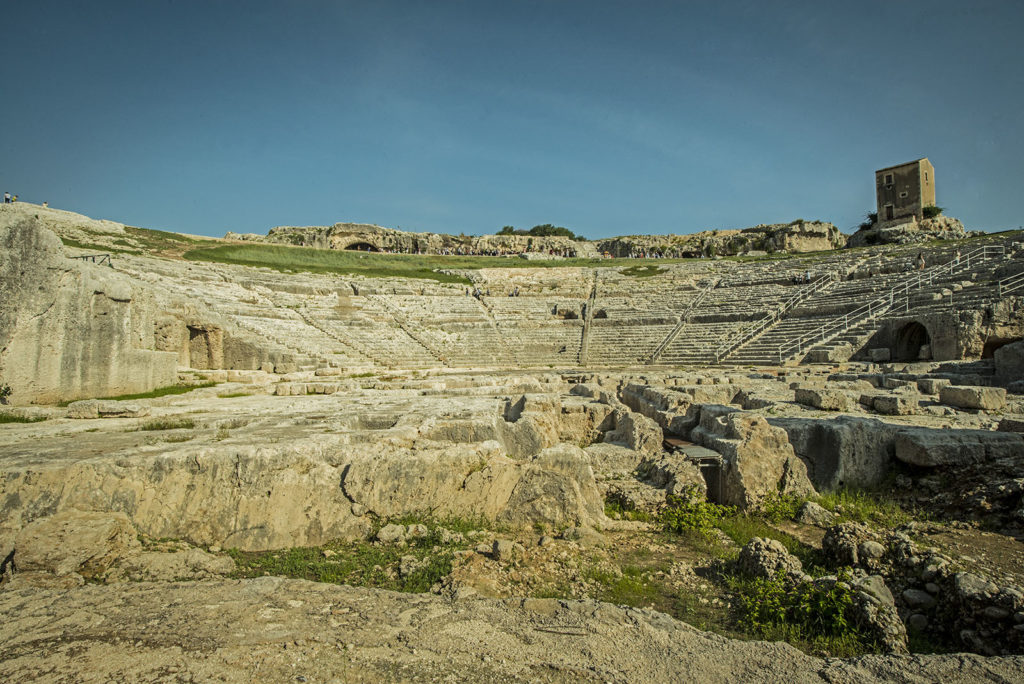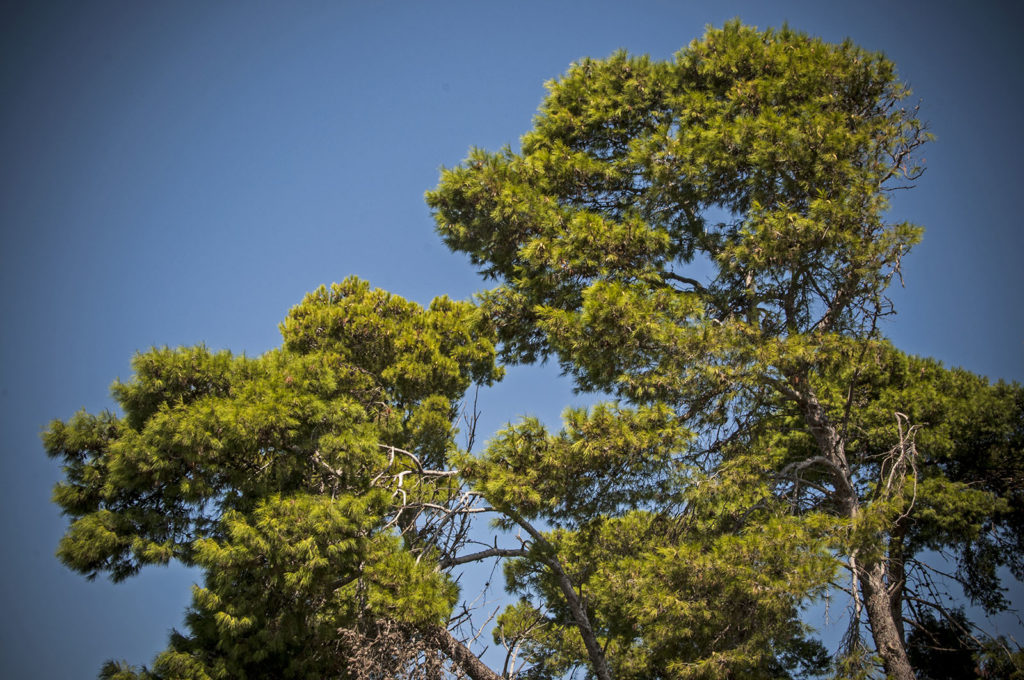One of the unique aspects of the Greek theatre is its exceptional acoustics. In ancient times actors did not use microphones to amplify their voices, but the spectators on the highest steps were able to hear the performances.
The secret to the acoustics in Greek theatres is connected to their semicircular shape, which helps to “hold” sound.

Immersed in nature, the Greek Theatre of Syracuse welcomes visitors among the fragrances and scents of the plants and trees that dot the park.
One of the smells of the land is the Mediterranean pine.
This tree, also called the maritime pine, is very common in Sicily and can be distinguished from the tree that produces pine nuts by the pungent smell of its needles.

The ancient Greeks carefully chose where to build the theatres.
From the theatre you could always see a beautiful panorama.
The theatre of Syracuse offered a view onto the port and the island of Ortygia.
Today, from the steps of the ancient cavea, the view over the Mediterranean Sea is now obscured by an expanse of trees and small shrubs which filter clear and greenish sunlight during the day, and red and warm light at sunset.
The gladiators lived in training schools, familiae, run by an owner who fed them and prepared them for fighting.
In the familiae, gladiators had to follow a special diet to improve their physical strength.
This diet included many legumes, grains, onions, garlic, fennel seeds, fruit and dried figs, and was poor in meat. The diet also included dairy products, oil, honey and wine.
The night before fighting, the gladiators attended a rich banquet to build their strength.
On this occasion, they ate barley flat breads sprinkled with honey and drank fenugreek infusions with strengthening properties.